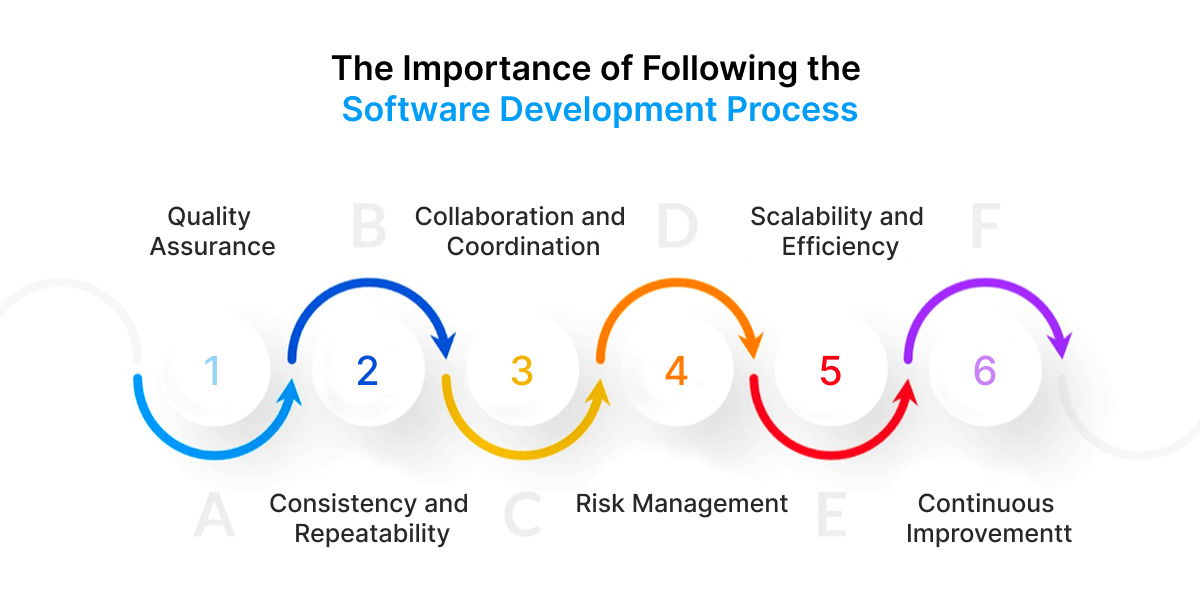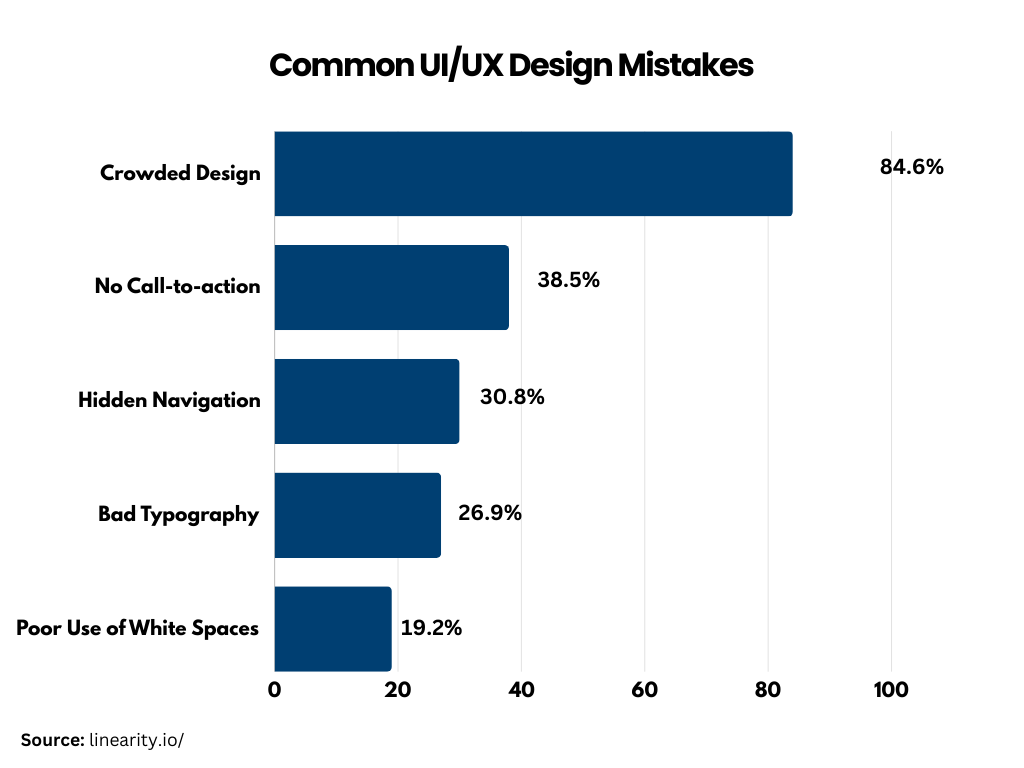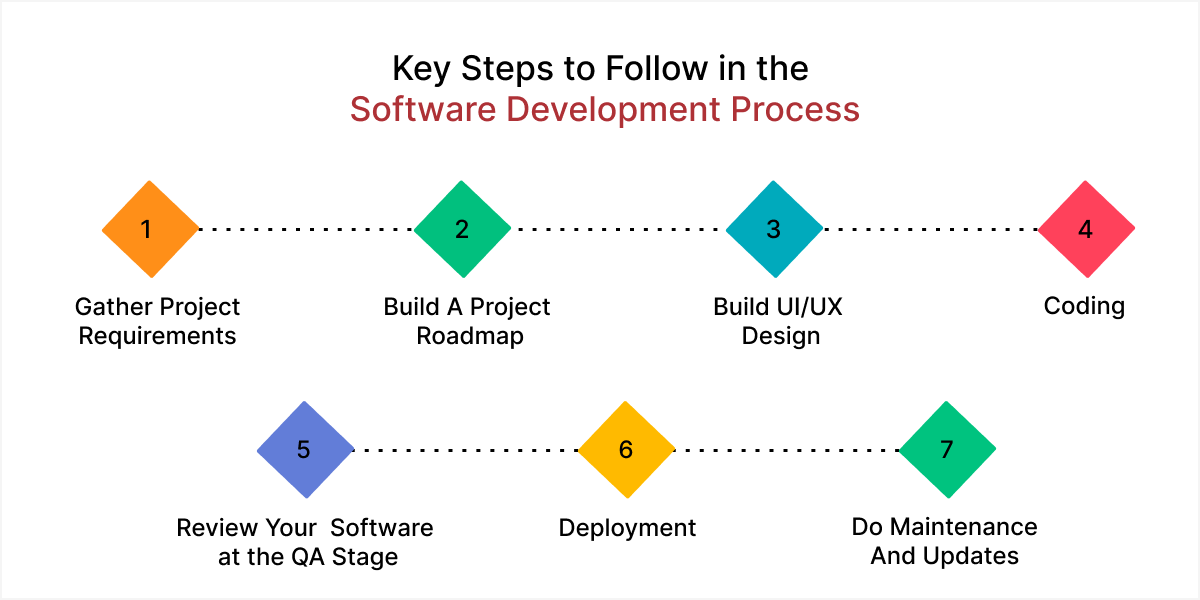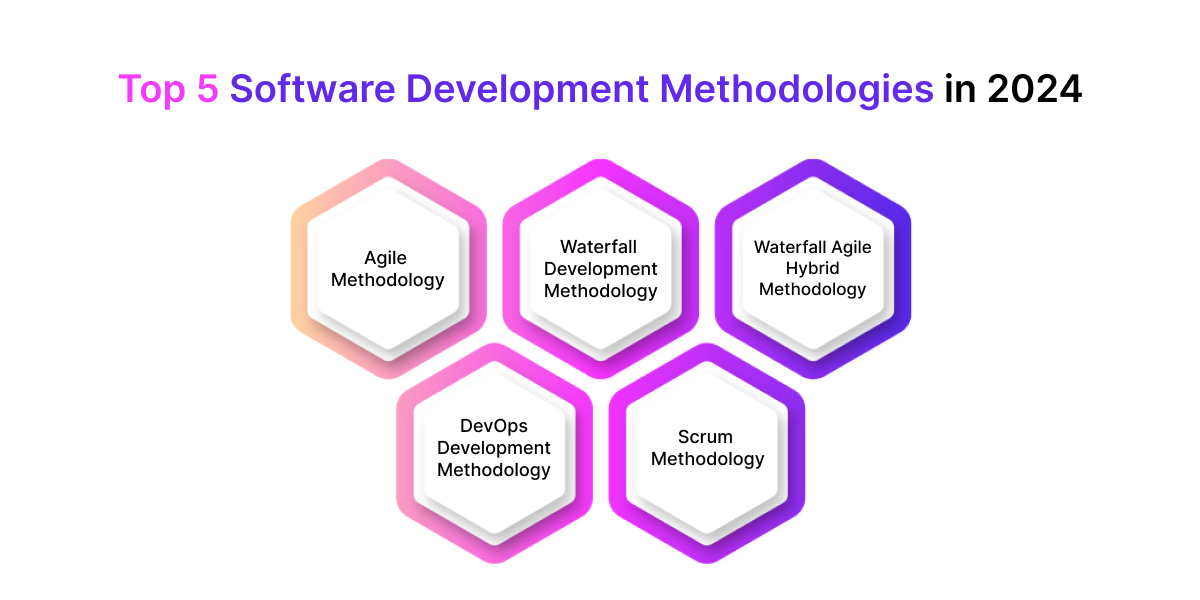2500+
Successful Projects

Software development continues to be one of the best investments for businesses planning for digital transformation. Although it requires a significant upfront investment, its long-term benefits are enough to justify the high cost and effort. Every single phase of the software development process carries utmost importance and can't be overlooked.
A detailed software development lifecycle (SLDC) can be understood as a blueprint for developers and other stakeholders outlining the series of steps required to build a computer program from scratch. It particularly hep programmers to know what to do next and also let clients to stay updated of what's going on.
Table of Contents
If you are planning for digital transformation and are about to invest in software development, it is essential to understand each step of the process. This comprehensive guide to the software development process will explain each aspect of SDLC. So, let's get started!
The Software Development Process, also known as the Software Development Life Cycle (SDLC), is a structured approach to creating a computer program that fulfills specific business or personal needs, objectives, or procedures. The process involves several stages, including conducting research, designing data and process flows, creating technical documentation, thorough testing, debugging, and iterative deployment.
The SDLC serves as a global standard for software developers to develop and enhance their software applications. It provides a clear framework for development teams to adhere to in the design, development, and upkeep of top-notch software. The objective of the IT software development process is to create efficient products within a set budget and timeframe.
This post will further explain the steps in the Software Development process and the role of Testing within it, offering valuable insights for budding developers, freelancers, and businesses.

A robust software development process is key to developing high-quality software swiftly and efficiently. This well-planned and executed approach offers several benefits, including
A well-defined software development process prioritizes quality at every stage, from identifying requirements to testing and implementation. It incorporates elements such as code reviews, testing strategies, and quality assurance methods. These help in the early detection of errors, bugs, and security vulnerabilities, enabling timely rectification.
A well-structured process provides a uniform framework for software development. It outlines the steps, roles, and tasks, ensuring that each project follows the same approach. This uniformity allows teams to replicate successful practices, reuse components, and leverage previous work, thereby enhancing productivity and minimizing risks.
It facilitates teamwork by providing clear guidelines and procedures. It simplifies communication and collaboration among team members with diverse roles and responsibilities, such as developers, designers, testers, and project managers. Effective teamwork reduces misunderstandings and ensures smoother development cycles.

A systematic approach identifies and addresses risks throughout the software development life cycle. This approach includes identifying potential risks, planning how to mitigate them, and preparing for any unexpected issues. Proactively managing risks reduces the likelihood of project delays, cost overruns, or significant failures.
With a solid software development process in place, teams can handle larger and more complex projects, facilitating scalability. It aids in resource allocation, task distribution, and prioritization. With clear processes, organizations can maximize their development efforts, reduce time-to-market, and adapt to changing project requirements.
A key aspect of an effective software development process is the continuous focus on improvement. This involves analyzing past projects, learning from them, and using feedback to identify areas for improvement. Regular review and enhancement of the process enable companies to hone their software development capabilities, foster innovation, and maintain competitiveness in a rapidly evolving industry.
While every development company has its distinct software development process, it usually goes through universally accepted and standardized stages, which include the following:
The initial step involves a comprehensive collection of all the software's functional and non-functional specifications. The software development company then conducts in-depth research that includes engaging with stakeholders, conducting user interviews, and scrutinizing competitors and the market dynamics of the specific sector.
At this stage of the software development process, it's crucial to ensure that your product concept is rooted in a user requirement and that your upcoming software addresses a real issue. To confirm this, it's important to authenticate your product concept through a thorough Discovery Phase. Engage with your prospective users, propose solutions, conduct tests, and make necessary adjustments.
Using the previously collected requirements, the Product/Project Manager creates a Project Roadmap or a Software Development Strategy, which includes the steps for execution.
With a comprehensive Project Roadmap, it's also essential to consider the resources necessary for the plan's implementation. Specifically, think about your team - how many Project Managers, Engineers, Designers, and QA Engineers are required for your project team. Naturally, it's crucial not to overlook the anticipated budget.
In the initial phase of designing software, the team focuses on crafting the visual aspect of the product. This is referred to as User Interface Design, which shapes the user experience of the software.
However, design extends beyond mere aesthetics. While visual appeal is key to engaging users, functionality and ease of navigation play a significant role in retaining them. This aspect of design, which ensures a smooth user journey, is known as User Experience Design (UX Design).

To underscore the significance of robust UX design for an app's performance, let's consider the consequences of exceptional UX design:
In the fourth phase of the software development process, the developers start to translate the previously outlined concepts into code. This involves implementing all the models, business logic, and service integrations that were defined in the earlier stages.
The coding phase is typically the most time-consuming, as it forms the foundation of the entire process. The developers adhere to the software requirements to create a product that meets the expectations of the stakeholders. If the preceding stages were executed meticulously and the requirements were well-defined, the coding phase will proceed smoothly.
The development process advances through several stages, starting from alpha, moving to beta, then to release candidate, and finally to product build. Once the entire architecture (including the database, API, etc.) and the planned functionality of the solution are constructed, the testing phase commences.
After completing the software development process, it's crucial to check the software’s functionalities and efficiency by carrying out Quality Assurance (QA) testing. During this stage, testers identify and report any issues that may arise when the system is in use.
The testing phase typically runs in parallel with ongoing development. As the development team produces sections of the software, the QA team conducts tests, enhancing the software with each iteration.

The type of testing the QA team employs will depend on your project's specific needs. Here are the primary types used in the software development process:

After the completion of the development and quality assurance testing stages, the next phase in the software development process is deployment. The main objective of this phase is to bring the software into operation and make it accessible to its target users.
The deployment phase is not just the final stage of the software development process. When executed correctly, it not only guarantees seamless transitions but also lays the foundation for the software's adaptability and future success. It's like setting the stage for the software to thrive and evolve in the future. This phase is crucial as it brings the software to life and into the hands of its users.
Software maintenance and updates are the concluding yet ongoing stage of the software development life cycle. This stage includes a variety of tasks to ensure the software continues to function optimally, adapts to the changing needs of users, and stays abreast of technological advancements.
Here are some tasks performed during this stage:
Businesses must adapt emerging software development technologies to stand out and get ahead in the market. This involves mastering methods and technologies that speed up software rollout, enhance its quality, and make it more effective.
AI empowers software to mimic human decision-making and learning. Developers and businesses can leverage AI technologies like neural networks, machine learning, natural language processing, and cognitive capabilities to create disruptive products and services that give them a competitive edge.
This technology helps create applications specifically for cloud environments. A cloud-native application is made up of individual, reusable components known as microservices. These microservices, often packaged in containers, are designed to work in any cloud environment. Thanks to this architecture, cloud-native applications can utilize cloud environments to boost their performance, flexibility, and scalability.
Just like IT departments are turning to the cloud to streamline resources and reduce expenses, software developers are doing the same. The cloud is a swift, adaptable, cost-effective integrated development environment (IDE) or development Platform as a Service (PaaS). It can handle coding, design, integration, testing, and more tasks. Plus, it provides access to APIs, microservices, DevOps, and other essential development tools and services.
Blockchain is a secure digital ledger that eliminates the costs and vulnerabilities caused by intermediaries like banks and regulatory bodies. It's revolutionizing businesses by liberating capital, speeding up processes, and reducing transaction costs.

Blockchain offers a massive opportunity for software development. Developers use distributed ledgers and open-source Hyperledger technology to transform businesses' functions.
According to Forrester, low code is a concept that involves using products or cloud services for application development. These services use visual and declarative methods, reducing the need for traditional programming.
This approach is cost-effective and requires minimal training, making it accessible to everyone, not just professional coders. In essence, low code is a strategy that simplifies the application development process, allowing even non-technical individuals to contribute to the swift and economical development of applications.
By 2020, the global job market will see nearly 700,000 openings for roles such as data scientists, data developers, and data engineers. This surge in demand highlights the importance for businesses to extract valuable insights from the vast amounts of data available. Software developers are incorporating advanced analytics into their applications to meet this need.
The use of cloud-based services and APIs simplifies data exploration, automates predictive analytics, and facilitates the creation of dashboards. These advancements provide new insights and enhance decision-making processes.
SEM is a method where software design languages are utilized to carry out initial prototyping, simulation, and evaluation of software blueprints for early verification. Creating designs using SEM allows you to scrutinize and expand project prerequisites and swiftly transition from design to execution.
Software methodology guides the programming team during the development. Here’s a list of top software development methodologies to consider in 2025:

The Agile methodology is a disciplined yet flexible approach to software development that enables software engineers and teams to efficiently and effectively manage the entire software creation process. This includes planning, designing, implementing, testing, deploying, and maintaining software products.
The Agile approach breaks down the project into bite-sized pieces known as "sprints." Each sprint is meticulously planned and typically lasts between 2 to 4 weeks. Importantly, each sprint results in a functional segment of the software, allowing for ongoing enhancement and adaptation throughout the development process.
The Agile framework includes several methodologies, such as Scrum, Kanban, and Extreme Programming (XP).
The waterfall development model is a classic and straightforward method for developing software. It's like a step-by-step process, where you finish one step completely before moving on to the next. Because of its organized and rigid structure, it's a go-to choice for projects where consistency, thorough documentation, and meeting regulations are key.
Waterfall Agile Hybrid methodology is like a custom-made suit in the world of software development. They blend elements from the waterfall, agile, and Scrum methods to create a flexible process for building software. It aims to take the best parts of different methods while reducing their downsides. This way, organizations can shape their software development process to meet each project's unique needs.

DevOps is a unique blend of development (Dev) and operations (Ops) teams working together to build software. It's a team effort where everyone collaborates and integrates their skills.
The main goal of DevOps is to streamline the software development process. It achieves this by automating repetitive tasks, continuously integrating and deploying, and speeding up the application's delivery.
Scrum is a widely used agile framework in software development. It's designed to manage and deliver complex projects effectively. Scrum provides a structured yet flexible approach with an emphasis on iterative progress.
Scrum is a lightweight methodology that values collaboration, transparency, and adaptability. It is particularly useful for projects where requirements may change frequently. Scrum thrives on regular feedback and active customer participation.
The software development process isn't just meant for programmers and developers but for clients, too. The detailed roadmap allows them to understand what's going on and what to do next, keeping everyone updated on the progress.
Each stage is crucial and interconnected, ensuring the final product meets the desired quality standards. This process is not one-size-fits-all and can be adapted based on the project's needs. It requires a collaborative effort from various professionals, including developers, testers, and project managers.
Ultimately, understanding and implementing this process effectively can lead to the successful delivery of a software product.